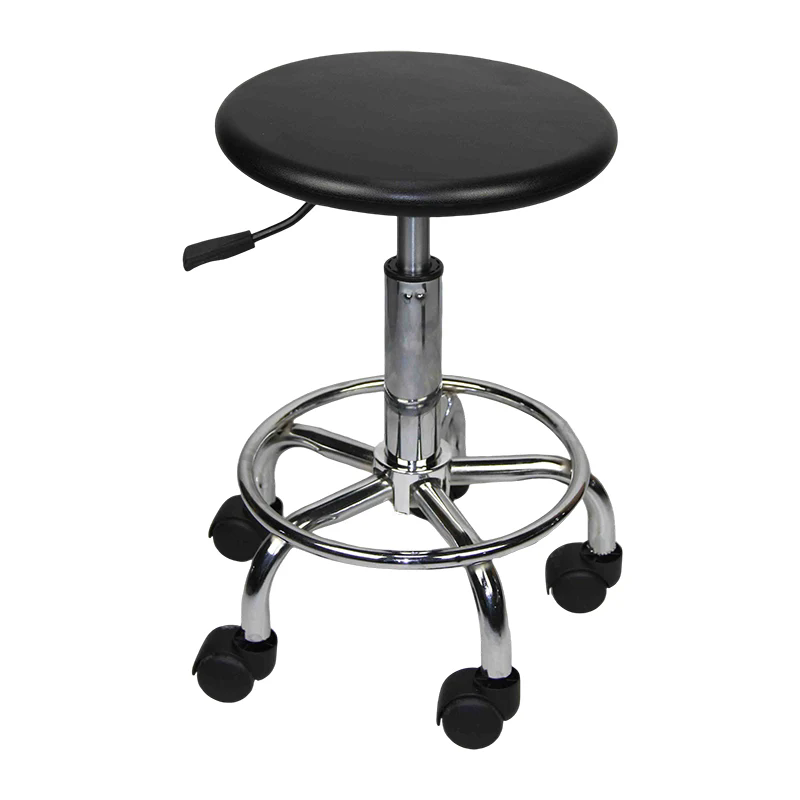- English
- Español
- Português
- русский
- Français
- 日本語
- Deutsch
- tiếng Việt
- Italiano
- Nederlands
- ภาษาไทย
- Polski
- 한국어
- Svenska
- magyar
- Malay
- বাংলা ভাষার
- Dansk
- Suomi
- हिन्दी
- Pilipino
- Türkçe
- Gaeilge
- العربية
- Indonesia
- Norsk
- تمل
- český
- ελληνικά
- український
- Javanese
- فارسی
- தமிழ்
- తెలుగు
- नेपाली
- Burmese
- български
- ລາວ
- Latine
- Қазақша
- Euskal
- Azərbaycan
- Slovenský jazyk
- Македонски
- Lietuvos
- Eesti Keel
- Română
- Slovenski
What Makes an ESD Chair for Modern Workplaces?
2025-09-10
In today’s high-tech industries, where sensitive electronic components are handled daily, preventing electrostatic discharge (ESD) is more critical than ever. ESD can damage components, interrupt production, and lead to costly losses. One of the most effective preventive measures is using ESD chairs, which are specially designed to minimize static electricity and protect both employees and equipment.
Why Are ESD Chairs Important in Static-Sensitive Environments?
Electrostatic discharge occurs when an imbalance of electric charges builds up on a surface and then rapidly transfers to another object. In industries like electronics manufacturing, semiconductor production, pharmaceuticals, and cleanroom environments, even a minor static shock can cause severe damage.
The Impact of ESD
-
Component Damage: Sensitive chips and microcircuits can fail instantly from an uncontrolled discharge.
-
Data Corruption: Static shocks can interfere with data processing and lead to software failures.
-
Production Downtime: Equipment malfunctions due to ESD increase repair costs and slow down output.
-
Employee Safety: In some environments, ESD can create sparks that pose safety hazards.
Traditional chairs used in office or manufacturing spaces often have synthetic materials that generate and retain static charges. ESD chairs, on the other hand, are specifically designed to dissipate static safely into the ground, reducing the risk of damage.
Key Features of ESD Chairs
-
Conductive and Static-Dissipative Materials: The seat, backrest, and upholstery are made from materials that minimize static buildup.
-
Grounding Mechanisms: Equipped with grounding chains or conductive casters to ensure safe charge dissipation.
-
Ergonomic Design: ESD chairs combine safety with comfort, supporting long hours of seated work.
-
Durability: Built for high-performance environments, they withstand intensive use without losing ESD protection.
How Do ESD Chairs Work and What Features Should You Look For?
Understanding the working principle behind ESD chairs helps you select the right product for your facility. These chairs function by safely channeling any accumulated static electricity away from the operator and into the ground.
Working Principle
-
Static Dissipation: The seat and backrest materials are engineered to prevent static charge accumulation.
-
Conductive Pathways: The chair integrates conductive components that create a controlled path for electricity.
-
Grounding: ESD chairs connect to grounded floors or mats through conductive casters or grounding chains.
-
Continuous Protection: As the operator moves, charges are constantly dissipated, preventing dangerous buildup.
Essential Features of High-Quality ESD Chairs
| Feature | Description | Benefit |
|---|---|---|
| Material | Conductive or static-dissipative vinyl, leather, or fabric | Prevents charge accumulation |
| Grounding System | Grounding chain or conductive casters | Ensures safe discharge |
| Height Adjustability | Pneumatic seat height adjustment | Ergonomic comfort |
| Backrest Design | Curved and adjustable back support | Reduces fatigue during long shifts |
| Weight Capacity | Up to 150kg depending on model | Suitable for varied users |
| ESD Standard Compliance | Meets ANSI/ESD S20.20 or IEC 61340 standards | Guaranteed industry safety |
When choosing an ESD chair, always prioritize products that are tested and certified according to international standards.
What Are the Common Applications of ESD Chairs in Modern Industries?
ESD chairs are used wherever electrostatic-sensitive devices (ESDs) are manufactured, tested, or handled. They are an essential part of ESD control systems across multiple sectors.
Industries That Rely on ESD Chairs
-
Electronics Manufacturing: Protects delicate components during assembly and testing.
-
Semiconductor Production: Prevents chip failure caused by static discharges.
-
Cleanroom Environments: Maintains both static control and hygiene standards.
-
Medical Device Manufacturing: Ensures quality and safety in precision instruments.
-
Pharmaceutical Labs: Reduces contamination risks while protecting sensitive testing equipment.
By integrating ESD chairs with grounding systems, floor mats, and ESD-safe workstations, companies can build a comprehensive static control environment.
FAQs About ESD Chairs
Q1: How do I maintain an ESD chair to ensure long-term effectiveness?
A: Proper maintenance is essential for reliable static protection. Regularly clean the seat and backrest using approved ESD-safe cleaners to avoid residue buildup. Inspect grounding chains or conductive casters for wear and tear, and replace them if necessary. It is also important to periodically test the chair using an ESD resistance meter to confirm it meets industry standards.
Q2: Can ESD chairs be used with regular floors, or do they require ESD flooring?
A: While ESD chairs are effective on their own, pairing them with ESD flooring or grounding mats provides optimal protection. On standard floors, grounding chains or conductive wheels allow charges to dissipate, but in highly sensitive environments, combining multiple ESD-safe components ensures maximum safety.
Why Xin Lida ESD Chairs Are the Trusted Choice
Xin Lida has built a reputation for producing premium ESD chairs that combine ergonomic comfort, certified static protection, and long-lasting durability. Our chairs meet international standards, including ANSI/ESD S20.20 and IEC 61340, making them ideal for high-tech manufacturing environments worldwide.
By choosing Xin Lida, you benefit from:
-
High-performance materials designed for static control
-
Advanced ergonomic designs to reduce operator fatigue
-
Customizable options for different workplace needs
-
Reliable compliance with global ESD safety certifications
For businesses aiming to protect their sensitive electronic components while ensuring operator comfort, Xin Lida provides a solution that balances performance and safety.
Contact us today to learn more about our full range of ESD chairs and how we can help you create a safer, more efficient workplace.





